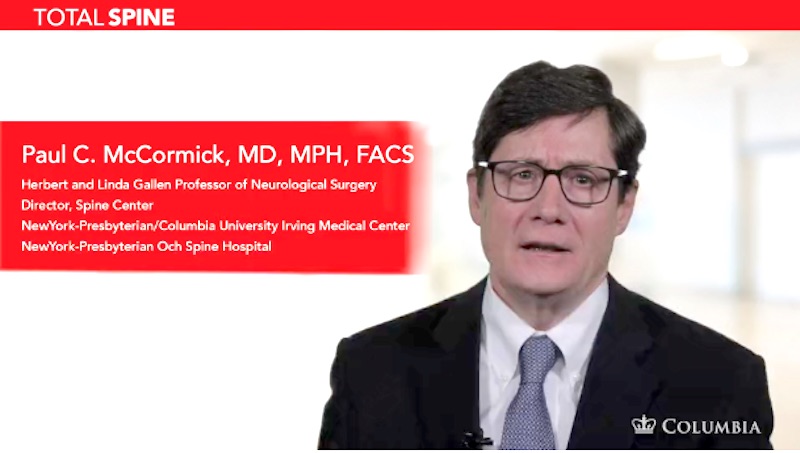An astrocytoma is a tumor that develops from an astrocyte, a type of support cell in the brain and spine. Here at the Spine Hospital at the Neurological Institute of New York, we specialize in spinal astrocytomas.
Most spinal astrocytomas are slow-growing and benign–that is, they are not cancer; they will not spread to other parts of the body. However, a small percentage of spinal astrocytomas may grow more aggressively, and a few may even be malignant–cancerous tumors that will spread if left untreated.
The type of astrocytoma can give information about the tumor’s possible behavior. For example, pilocytic astrocytomas are tumor types that are usually benign. These astrocytomas are more common in children than in adults. Intermediate tumors like diffuse astrocytomas are more difficult to classify with regard to “benign” and “malignant,” but they are generally slow-growing, though over time they may grow more quickly and become more aggressive. Anaplastic astrocytomas grow at an intermediate rate and are considered malignant. Malignant astrocytomas called glioblastomas grow most aggressively.
As spinal astrocytomas grow, they often weave in and out of the tissue of the spinal cord around them. This is called “infiltrating” the spinal cord. Because many astrocytomas infiltrate the healthy spinal cord, it may not be possible to remove them completely without causing damage to the spinal cord. The surgeon’s goal is to remove as much tumor as possible while preserving the maximum of spinal function. The extent of the surgery must be determined during the surgery.
The prognosis for an astrocytoma depends on the tumor’s aggressiveness, the type of astrocytoma, and the tumor’s size, location and spread. However, most astrocytomas are very benign and slow growing and can be managed over time with minimal effect on spinal cord function.
Similar tumors known as ependymomas arise from other support cells, called ependymal cells, in the brain and spinal cord. Unlike astrocytomas, ependymomas tend not to infiltrate the surrounding spinal cord tissue. In patients older than 20, ependymomas are the more common tumor type, while in patients under 20, astrocytomas are the more common type. Both tumors can occur at any spinal level, though astrocytomas of the lower lumbar and sacral spinal canal are extremely rare. Symptoms and imaging tests cannot always distinguish between astrocytomas and ependymomas. Therefore, it is not uncommon to need biopsy results to make a definitive diagnosis.
| 

